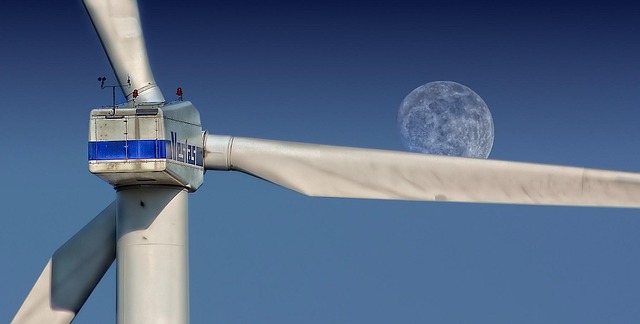Beyond Batteries: Exploring Diverse Energy Storage Technologies
The global pursuit for sustainable and efficient energy storage solutions has garnered immense attention over the past decade. As the world transitions toward renewable energy sources, the limitations of traditional battery technologies have become evident. While batteries, particularly lithium-ion types, dominate the energy storage landscape, a plethora of alternative technologies are emerging. These alternatives not only present solutions to the energy storage conundrum but also address issues related to scalability, environmental impact, cost, and efficiency.
The Imperative for Energy Storage
Energy storage serves as a critical bridge that connects energy production to consumption. With renewable energy generation like wind and solar being intermittent, energy storage technologies are essential to ensure consistent and reliable supply. Moreover, they enable grid stability, efficient load management, and enhanced energy efficiency.
Energy storage can also mitigate peak demand surges, reduce energy costs for consumers, and play a significant role in enhancing the resilience of energy systems, particularly in the face of natural disasters and climate change. As demand grows, it becomes increasingly crucial to look beyond conventional batteries and explore innovative storage technologies.
Exploring Energy Storage Technologies
Flywheel Energy Storage
Flywheel energy storage systems (FESS) utilize kinetic energy stored in a rotating mass. The concept is relatively simple: a rotor spins at high speeds, and energy is added to or extracted from the flywheel as it accelerates or decelerates. This technology is noted for its high power density, rapid response times, and long operational life.
Flywheels are primarily employed in applications requiring short-term storage, such as grid stability and frequency regulation. They can also support renewable energy systems, such as wind and solar, by providing instantaneous power during intermittent generation. Importantly, flywheels do not degrade significantly over time, meaning their lifespan can extend up to several decades, offering a sustainable advantage over conventional batteries.
Pumped Hydro Storage
Pumped hydroelectric storage (PHS) is one of the oldest and most established forms of energy storage. The method involves transferring water between two reservoirs located at different elevations. During periods of low energy demand, excess electricity is used to pump water from the lower reservoir to the upper one. During peak demand, this stored water is released to power turbines and generate electricity.
Pumped hydro has several advantages, including high efficiency and large-scale capacity, making it suitable for long-term energy storage. However, due to geographical and environmental constraints, the installation of pumped hydro systems can be limited. They also require significant infrastructure investment and careful environmental management, especially considering potential ecological impacts in aquatic ecosystems.
Compressed Air Energy Storage
Compressed air energy storage (CAES) involves using electricity to compress air in an underground cavern or container during off-peak hours. When energy is needed, the compressed air is heated and expanded through a turbine to generate electricity. Two primary types of CAES exist: the adiabatic and diabatic systems, with the former capturing heat generated during compression and using it to improve efficiency.
This technology is appealing because it contributes to grid stabilization and can be deployed at a large scale. However, CAES systems can face challenges, including high capital costs and limited sites for underground storage. Furthermore, the efficiency can be impacted by heat losses if the heat generated during the compression phase isn’t adequately captured.
Thermal Energy Storage
Thermal energy storage (TES) works by retaining heat or cold for later use. One common application is the use of large tanks filled with molten salt, which can absorb heat generated by solar power and release it when needed. Other methods may include chilled water storage for air conditioning systems in buildings.
TES systems have the benefit of being able to store energy for extended periods, even days or weeks, which differentiates them from many battery technologies. Moreover, thermal storage can often be more economical, owing to lower material costs. As renewable energy sources become more prevalent, thermal storage’s role in sustainably managing energy demand will continue to grow.
Supercapacitors
Supercapacitors, or ultracapacitors, are energy storage devices that offer high power density, incredibly rapid charge and discharge cycles, and long cycle life. Unlike traditional batteries that rely on chemical reactions, supercapacitors store energy electrostatically and can operate effectively under variable temperatures. Their rapid energy delivery makes them particularly well-suited for applications requiring quick bursts of energy.
However, supercapacitors typically have a lower energy density than batteries, which limits their application for long-duration storage. Nevertheless, they can complement batteries in hybrid systems, where they manage power surges and enhance overall efficiency. Their performance in applications such as electric vehicles and renewable energy integration is increasingly coming to the forefront of technological advancements.
Hydrogen Storage
Hydrogen has emerged as a promising energy carrier and storage medium. Through electrolysis, excess renewable energy can be used to produce hydrogen from water, which can be stored and later converted back into electricity through fuel cells or combustion.
The advantages of hydrogen storage include scalability and versatility. Hydrogen can be stored for long periods and transported relatively easily. Additionally, it can be used for a variety of applications beyond electricity generation, including transportation and heating. Nonetheless, the efficiency of hydrogen production, storage, and conversion processes currently poses challenges. Ensuring sustainable hydrogen production methods and addressing safety concerns associated with hydrogen storage are critical areas of ongoing research.
Gravity-Based Storage
Gravity-based energy storage systems leverage gravitational potential energy to store electricity. These systems typically involve lifting heavy weights to store energy, which can later be released to generate power as the weights descend. Several companies are exploring innovative designs, employing materials such as concrete, to construct large-scale installations that utilize this concept.
An advantage of gravity-based systems is the potential for low-cost deployment, as they may not require complex infrastructure. Furthermore, they offer longer life cycles without significant degradation over time. However, the technology is still in the development phase, and practical applications are limited at this stage.
Environmental Considerations
As the need for energy storage grows, environmental impact must be carefully evaluated. Many of the materials used in battery production, such as cobalt and lithium, present sustainability challenges regarding extraction and disposal. It is critical to consider the entire lifecycle of energy storage technologies, assessing not only their operational efficiency but also their material sourcing and recyclability.
Emerging energy storage technologies, such as those mentioned above, may offer cleaner alternatives or improved performance without many of the drawbacks associated with traditional lithium-ion batteries. Ongoing innovations in material science and technology can lead to enhanced sustainability across the board.
The Future of Energy Storage
The quest for diverse and efficient energy storage solutions is more important than ever as the world shifts toward a low-carbon economy. Each of the technologies discussed presents unique advantages and challenges, and a combination of them will likely be necessary to accommodate the diverse needs of future energy systems.
Investments in research and development will be pivotal in overcoming the barriers related to cost, performance, and scalability. Policymakers, businesses, and researchers must collaborate to create a regulatory environment that fosters innovation and promotes the deployment of novel energy storage technologies.
Conclusion
While lithium-ion batteries have played a crucial role in the energy landscape, exploring alternative energy storage technologies is essential for achieving energy sustainability. From flywheels and pumped hydro to thermal storage and hydrogen, a variety of promising solutions exist beyond conventional batteries.
In the coming years, the advancements in these technologies could revolutionize how we store and use energy. As we continue down this path, it becomes increasingly salient that a holistic approach, considering both efficiency and environmental sustainability, is vital to paving the way for a cleaner and more resilient energy future.










